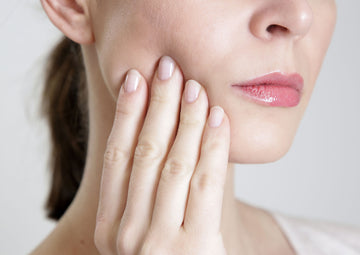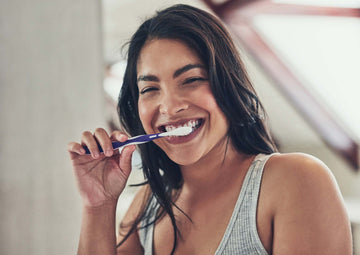

Ever since whitening strips first hit the market, customers and professionals have been testing their validity. They’ve been wondering, “Do whitening strips work?”
They’ve definitely improved over the years, but the questions remain: are they safe? And are they really that effective?
How Do Whitening Strips Work?
Whitening strips are similar to bleach but actually safe.
They use a combination of cleaning agents to essentially bleach your teeth white. The peroxide in whitening strips cleans beneath the surface of your teeth and brings out the best, whitest part of them.
As far as how quickly you’ll see results, it varies from person to person. Typically, they start working right away thanks to the bleaching agent in them. But you should start to see a noticeable difference in about 5-7 days.
And from that point on, the whitening stays if you continue to take care of your teeth.
So that means you’ve got to cut back on teeth-staining drinks and foods, like coffee, tea, wine, tobacco, and acidic foods. You’ll also need to keep up brushing 2-3 times a day and flossing once a day, and drinking plenty of water. And, of course, seeing your dentist twice a year.
According to most manufacturers, whitening from strips usually last about a year, but that can be affected by oral hygiene habits and diet.
How to Use Whitening Strips?
The good news is that whitening strips are pretty easy to use. Most whitening strips use a type of gel with peroxide in it, and the strips just apply to your teeth by folding over the front and back. In fact, the reason they’re so popular is that they’re both effective and easy to use.
You’ll want to make sure the entire front of each tooth is covered by the strip or you could end up with uneven whitening (not to be confused with the spots you may see when you first start the process). At the same time, you’ll need to make sure the strip isn’t touching your gums as it could cause damage.
It’s also important to use only as directed. If you don’t use the strips enough, you may not see results. And if you use them too much, it could cause erosion of the enamel or cause sensitivity.
Are Whitening Strips Bad For Your Teeth?
Because whitening strips include a bleaching agent, there is the potential of side effects, like tooth sensitivity, gum irritation, or tooth damage (on rare occasions). For the most part, these problems shouldn’t arise if you use the strips as directed.
The thing to look for on the pack of whitening strips is the American Dental Association’s seal of approval. If it has that, then it contains 10% or less of carbamide peroxide, meaning it’s safe if used as instructions. Non-ADA-approved strips could contain chlorine dioxide, which can seriously harm your teeth.
Alternatives For Whitening Strips
Fortunately, there are other options for whitening your teeth that are safer than whitening strips.
One option is a professional teeth whitening, but those are massively expensive. If you go to your dentist to get your teeth whitened, you could end up spending anywhere from $600 up to $1,000 or more.
A more affordable, safe teeth whitening at-home option is to use something like AuraGlow’s advanced LED teeth whitening kit. It’s only about $60 for a whole kit.
Our kit includes teeth whitening trays along with an LED light that speeds up the process. And it has minimal to no side effects, as opposed to the probable problems you may face with whitening strips.
For example, whitening strips commonly cause sensitivity. But we’ve developed the best whitening method for sensitive teeth so you don’t have to worry about irritation of your gums or teeth.
So, yes, you can use whitening strips. But you and your wallet may be better off going with AuraGlow’s full-service whitening kit.




